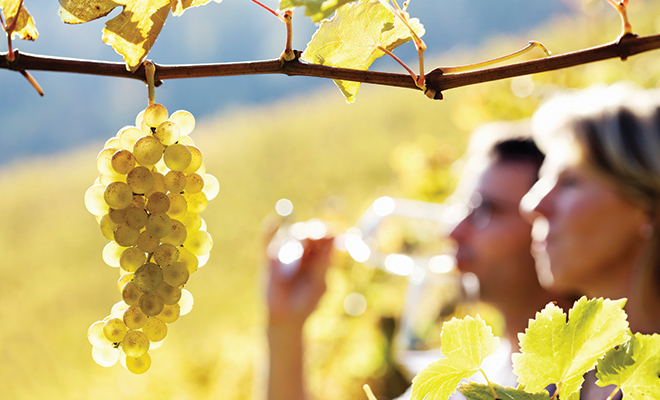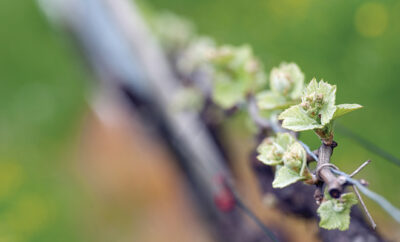
Natural – Organic – Sustainable Wines
Walk into any market and you’ll see areas specific to natural or organic foods, including your wine department. When you’re looking for wine that is natural and organic, the differences are as specifically unique as vegetarian versus vegan. There are commonalities, but there are distinct differences among the offerings at your supermarket or favorite winery. You could stare at the labels for hours and still be confused–and we certainly don’t want you to give up on your quest for wine!
What’s the difference? It’s a question not easily answered even by U.S. Food and Drug Administration guidelines. The FDA works diligently to monitor evolving food processing and manufacturing and does not have clear concise guidelines for “natural” or “organic” wine products. While the definitions are often up to interpretation and self-governing, the wine-producing entities and wine associations of the world work to provide consistent wine offerings and quality in the areas of natural, organic and sustainable categories. There are, however, some unofficial and generally accepted definitions that we expect in our wine selections.
Natural wine processing generally refers to the growth of the wine grapes themselves (not necessarily the winemaking). Handpicked vineyards may be dry farmed, meaning that supplemental water is not added in the yearly cycle of the vines and the grapes do not receive additional sugars or adjustments to the natural acidity or color of the fruit. Interestingly, naturally occurring yeasts and bacteria are not adjusted either, lending to a natural flavor. For example, petite sirah’s natural fermentation and maturation into wine will not be affected by any usual additives such as oak staves, smoke, juice extracts or filtration with chemicals or animal products. The terms natural and organic wine are sometimes interchangeable, because natural farming and organic farming are similar. And European wine producers will tell you they’ve been providing organic quality wines for generations.
Organic denotes additional levels of vineyard management that “natural” doesn’t fully encompass. The U.S. Department of Agriculture oversees organic certifications of foods sold, which is a $34 billion industry. We use the “O” word all the time in referring to gardening or farming cattle, food, milk, corn, etc. But we’ve come to understand that organic does not necessarily mean free from additives that enhance nutrition, color and resistance to disease. This is also true in the wine industry. If a vineyard uses a modern treatment that enhances the absorption of water, repels pests and minimizes ill-intended growth, that is certainly not allowing for a natural vineyard, but is that really a bad thing? Both quality and quantity of grapes are critical components to any wine endeavor, natural, organic or otherwise.
Sustainable vineyard management is an entire school of wine study at today’s premier universities involving bio-dynamic fuels for tractors, biodegradable wine labeling, recycled wine bottles, compostable wine boxes and more. When farmers work at sustainable practices, it demonstrates long-term commitment to both the quality of fruit and effects on the environment.
Truth is, all the certifications in the world will not turn grape juice into great or even palatable wine. Even with certification, the goal is a mostly pure wine that everyone will enjoy. Wine is a business and certifications cost money–lots of it. With documentation of water, waste management processes, staffing and documentation for each and every county, regional, state and federal department, there’s a lot at stake. Will the certification sell more wine? No guarantee. In fact, many wineries with natural harvests may still have traditional winemaking processes. They may choose not to place the words natural or organic on the label because it might run the risk of demeaning the perceived value or quality of the wine. Does it matter? Natural wines will have the most minimal interference with sulfites; if you’re allergic to sulfites, it’s difficult to avoid them because anything that decays will produce this naturally occurring component. Headaches, heartburn, acid reflux can all be enhanced by consuming sulfites in both red and white wines.
How does natural wine taste? For folks who commit to natural and organic diets, the dietary sensibilities naturally coincide. But how do mainstream snacks such as corn chips stack up against a natural wine? The lack of added sugars and chemical zest in the wine could leave you with a boring experience on your palate. I’d suggest trying an organic wine perhaps from Chile or New Zealand in the $10 range and judge for yourself!
Is it right for you? More grape growers, winemakers and wineries are embracing the transition to more natural, organic and sustainable practices. We have the opportunity to try so many amazing wines of certified and non-certified varieties. We enjoy our locally sourced produce, meat and wine as part of an ever-growing farm-to-glass-to-plate movement that continues to bring our communities together. More than marketing buzzwords these days, the concept of wine being natural, organic or farmed in a sustainable manner is more than trending; it’s a way of life and it’s here to stay. HLM
Sources: vwmmedia.com; The Green Vine by Shannon Borg, The Mountaineers Books, Seattle, WA, 2013; and the experience of the author.







